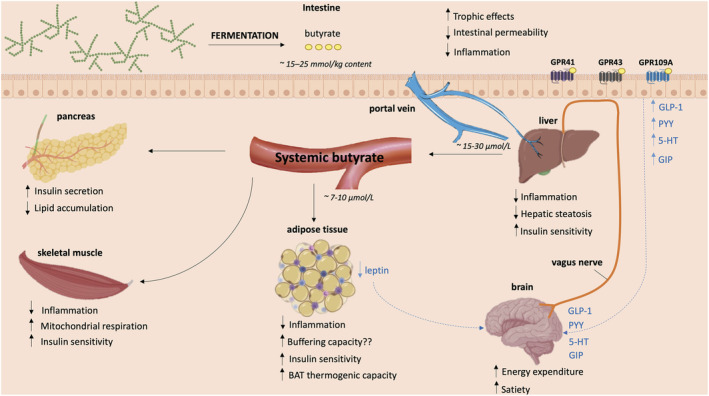FIGURE 3.

The putative metabolic effects of butyrate on different organs based on evidence from mainly animal and in vitro data. When butyrate is produced from the fermentation of dietary fibers in the intestine it mediates direct local effects on the intestinal barrier. Here, butyrate binds to G protein‐coupled receptors, thereby stimulating the synthesis of several neuropeptides that can signal to the brain. Butyrate that is not utilized by intestinal cells is transported to the liver via the portal vein. Thereafter, minor quantities of butyrate reach the circulation, consequently affecting other organs such as the adipose tissue, skeletal muscle tissue and pancreas. 5‐HT, serotonin; GIP, glucose‐dependent insulinotropic polypeptide; GLP‐1, glucagon‐like peptide 1; GPR109A, G protein‐coupled receptor 109A; GPR41, G protein‐coupled receptor 41; GPR43, G protein‐coupled receptor 43; PYY, peptide YY. Created with BioRender.com
